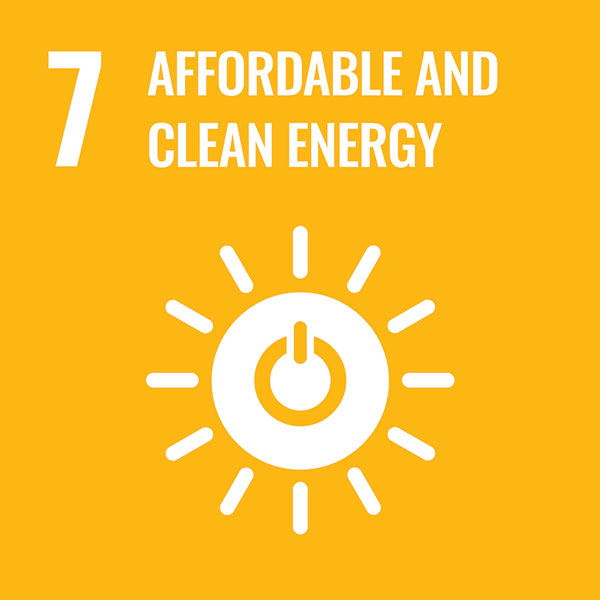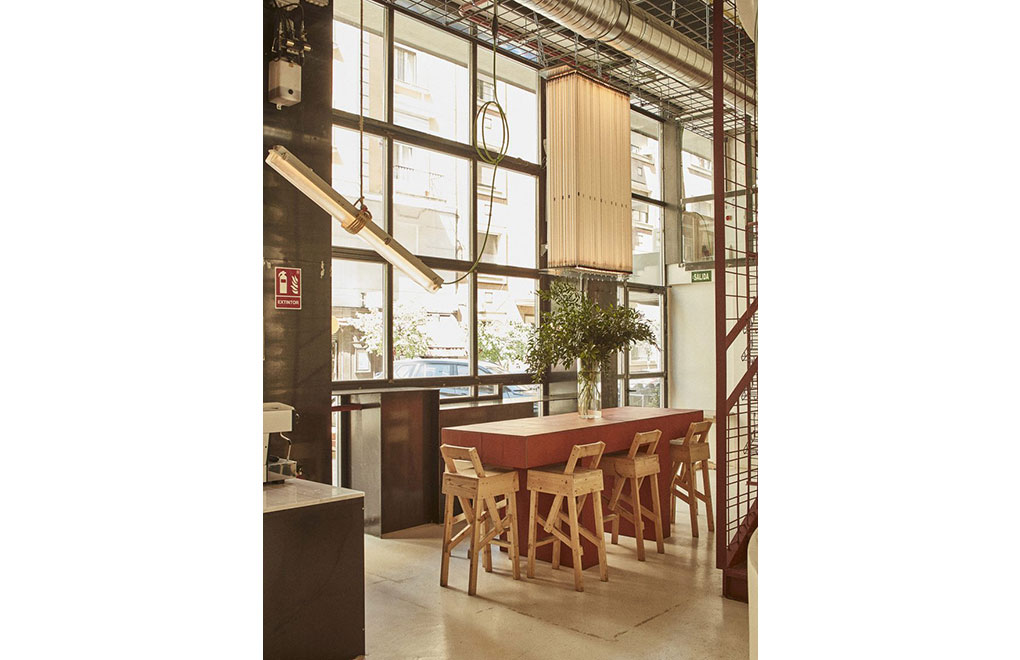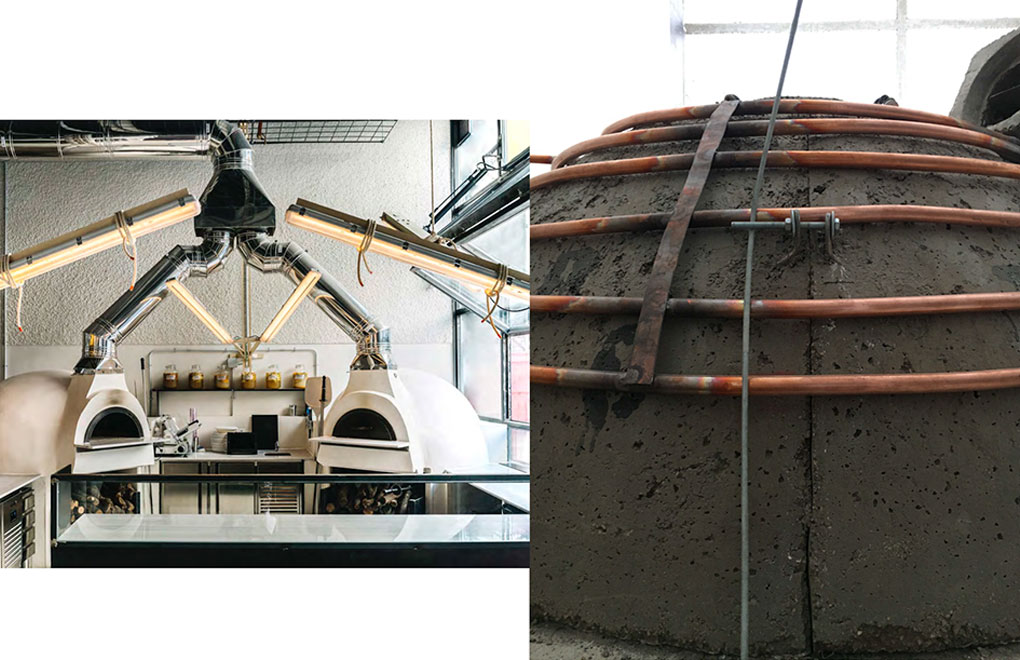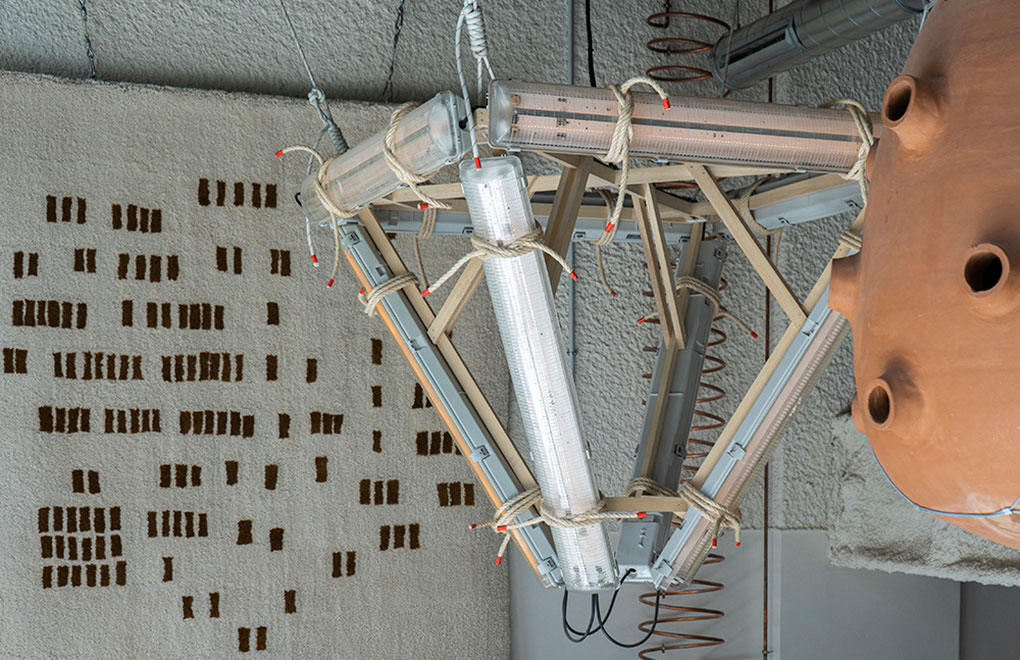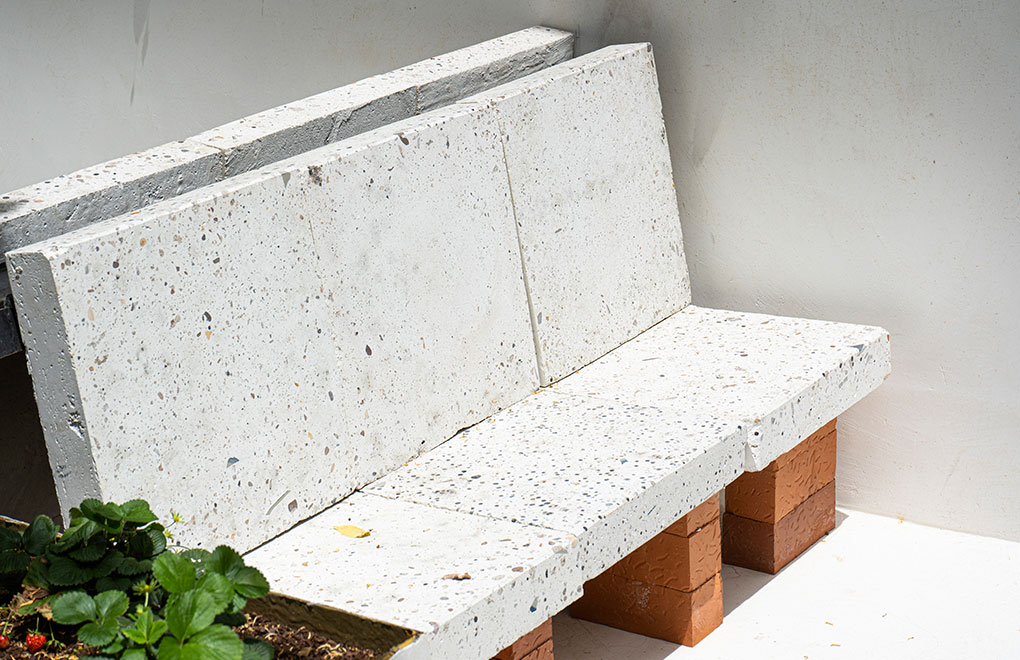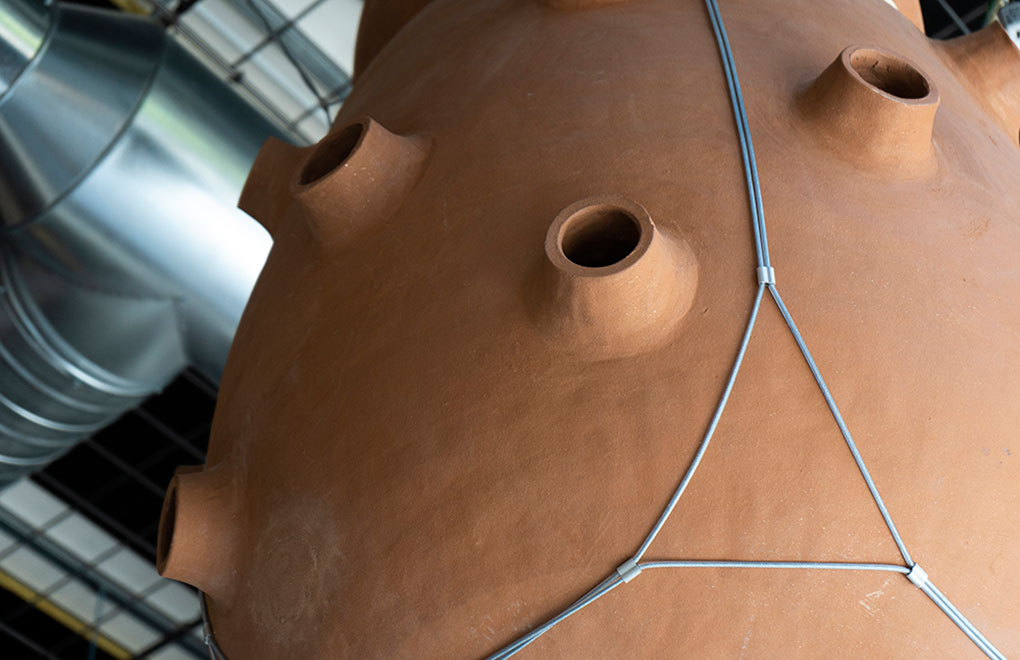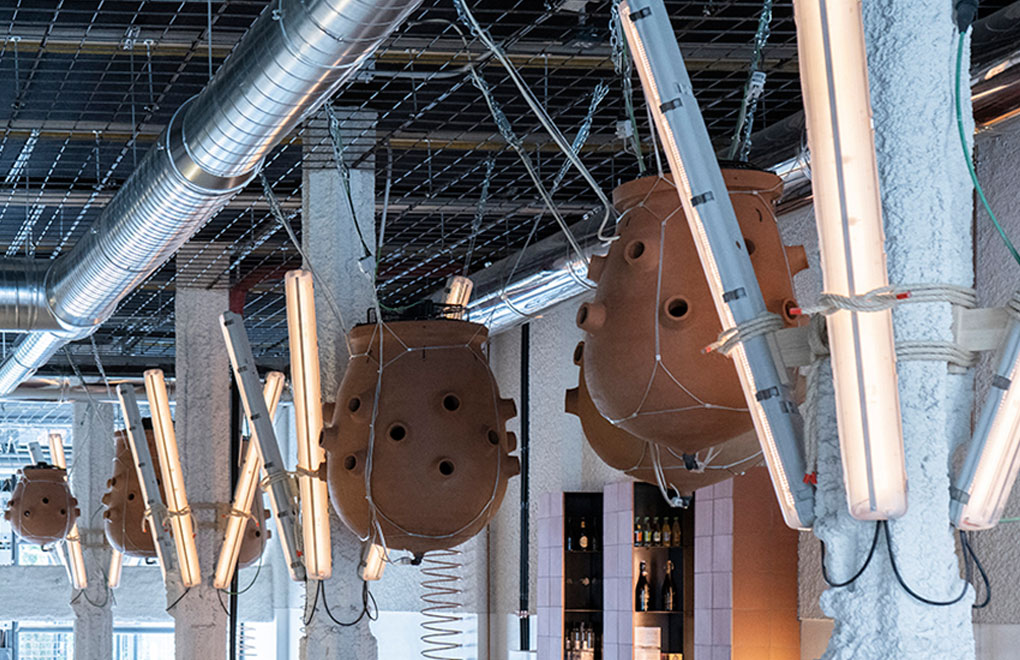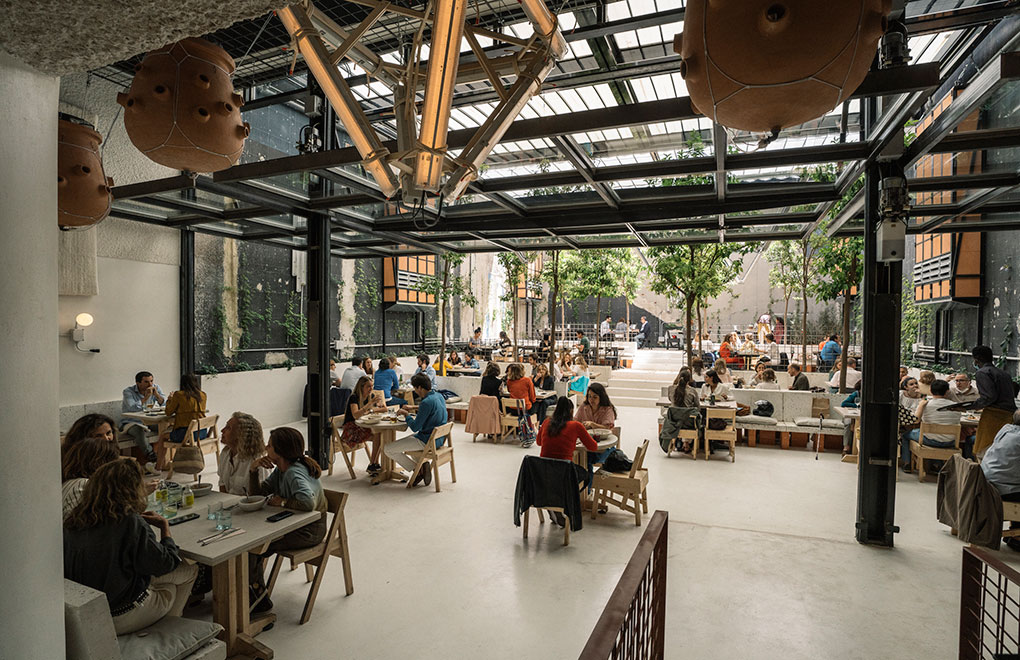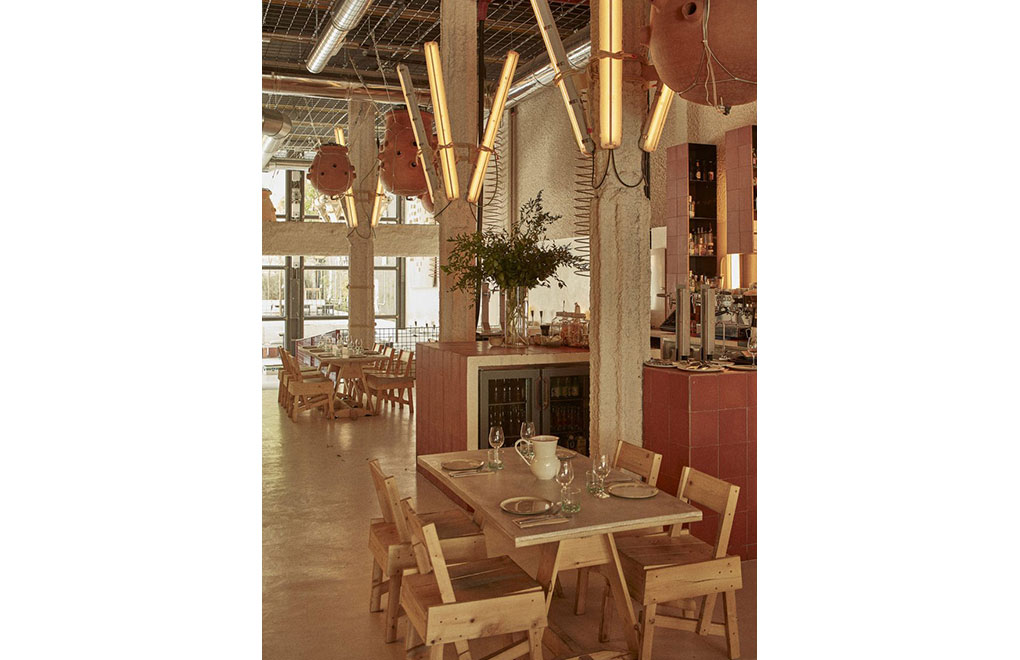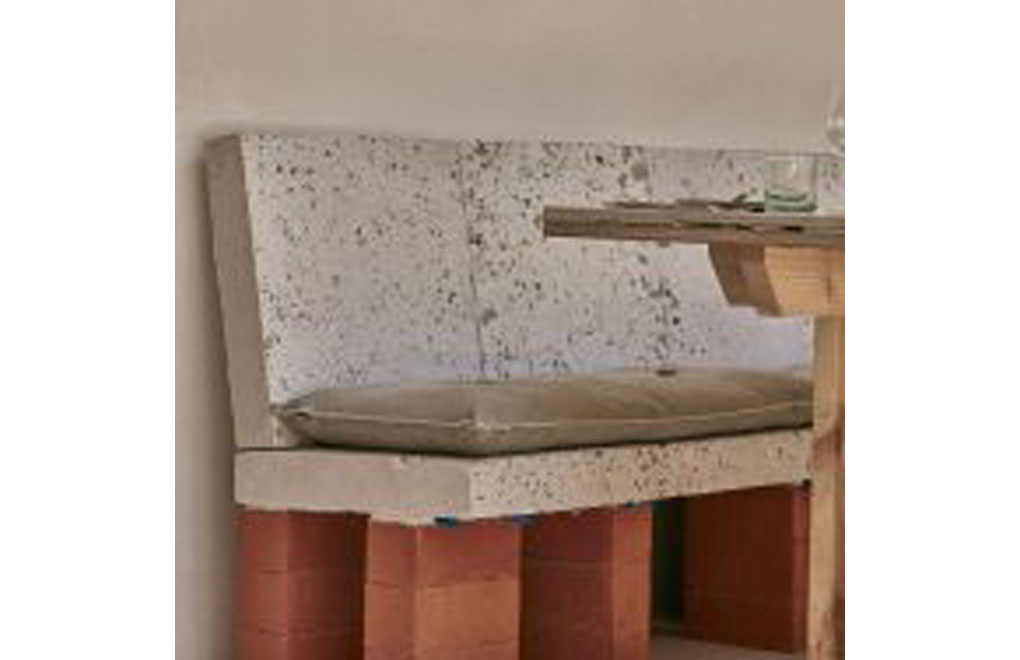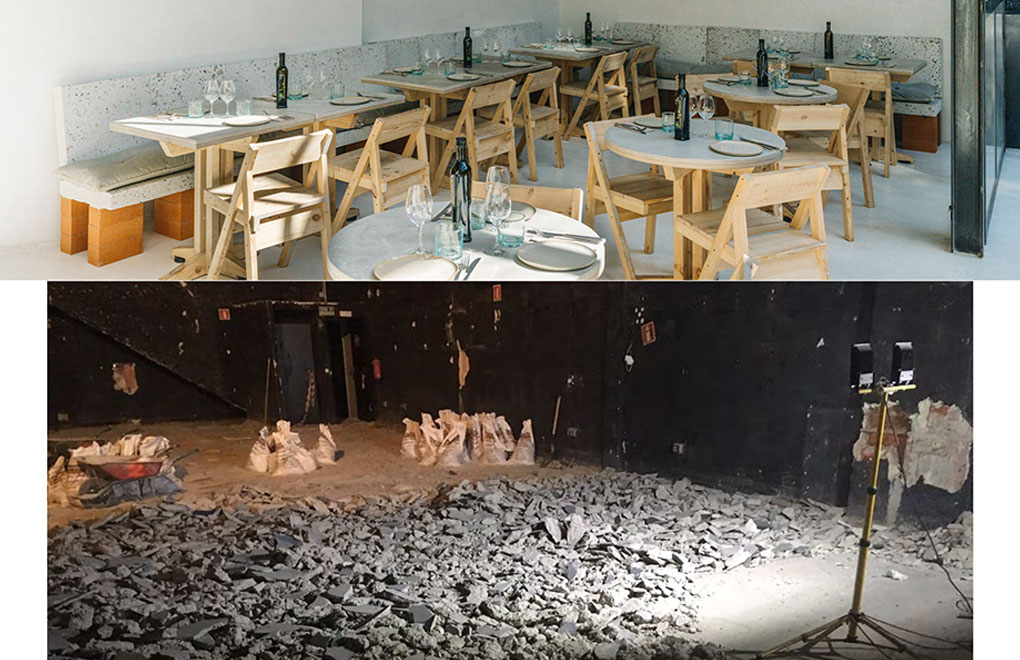Project Overview
Spain's MO de Movimiento restaurant has become a beacon of sustainability, demonstrating a holistic approach to environmental consciousness. By repurposing on-site materials and implementing an innovative terracotta-based cooling system, the restaurant minimizes its environmental footprint. Additionally, its commitment to social responsibility is evident through partnerships with organizations providing job opportunities for at-risk youth. MO de Movimiento serves as a pioneering example of how the built environment can be both sustainable and socially impactful.
Project Details
General Information
MATERIALITY: The project created a material dogma for its construction: to resolve any spatial and functional need of the space it looked to extract the material from the same construction site: rubble and former wooden structures became tables, chairs and benches; illumination and uniforms sourced from second handsecondhand dealers: uniforms and textile color dying and terracota air cooling units created in collaboration with local craftsmanship. SOCIAL: Many of these designs were developed in collaboration with associations that work with young adults in risk of social exclusion giving them a first working opportunity. At present the restaurant work force is half composed by staff provided by these associations. WATER: The space has been equipped with several water circuits: tanks for rain waterrainwater collection, triple filter for tap water purification, water used for gardening is first used for space cooling and hand water is later used in flushing. ENERGY: In addition to all this, an innovative air coolingair-cooling system based in an adiabatic exchange of temperature is performed by terracota vases hanging from the ceiling and big wall units in the patio. Water is heated by the remanent heat of the pizza oven. This also floor heats the space.
Creative Solution (Creativity/Innovation)
All design units have been designed and produced with material reclaimed, all furniture comes from the material available at the construction site and other elements from used material dealers. All materials bought was chosen after an independent professional analysis of the hydric, social, CO2 and chemical footprint of the different locally available suppliers. Much of the work was developed in during collaboration with social associations and the relevant generated intelectual property has been made available as open source. The project has sought to generate a minimal footprint, having reduced (according to external calculations) at least 70% of the potential CO2 footprint.
Social Impact (Inspiration/Impact)
The project has been widely communicated and has generated a much emulatedmuch-emulated precedent in material usage and conscious approach to construction. It can be said that this project pioneered conscious change not only in Spain but in Europe, the - if credit is given to the awards it has received and Tim Cook's visit. Furthermore, this project's daily activity not only gives a first job opportunity to half of its working force, which is either in risk of social exclusion or has migration issues, but also accompanies these people into their professional first steps after the year of training at the restaurant.
Participation/Cooperation
This has indeed been a very important collaborative effort: two external - and not related to each other - sustainability experts were commissioned to be advisors and footprint calculators since the first minute; the project actively collaborates with three social projects since its construction; traditional craftsmanship was placed into value through the making of the uniforms, air cooling terracota vases and other elements; All the project engineering innovations (vernacular air cooling systems, water heating, etc) was developed in collaboration with university research departments and expert engineers; Lucas Muñoz ideated, designed and put together several freelancing collaborative teams for each task: furniture, textile, etc, etc.,...
Vision for the Future
Local, ad-hoc, site specific constructing and making material vision based on collaborative freelancing efforts that is actually the most vernacular of possible visions. High social investment: as humans sought to solve any given construction until recently. This old fashionedold-fashioned approach is revisited through contemporary technologies and knowledge and supposes a glimpse into potential forward-looking design approaches: to think global, dig local, liquid collaborative teams based on expertise, non extractive architecture and design, reclaim, recycle, up-cycle and reinterpret instead of material extraction. Finally, to openly communicate and share all gathered knowledge, fore-sought strategies, craftsman involved... aA manifesto was published at the project completion.


